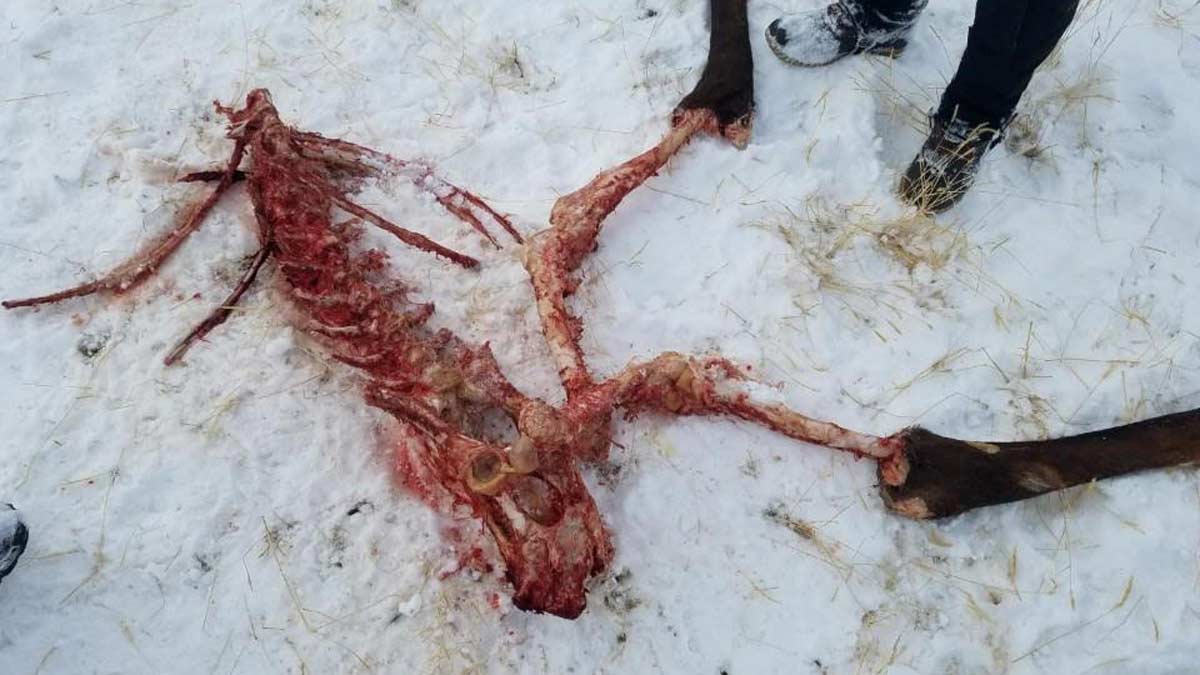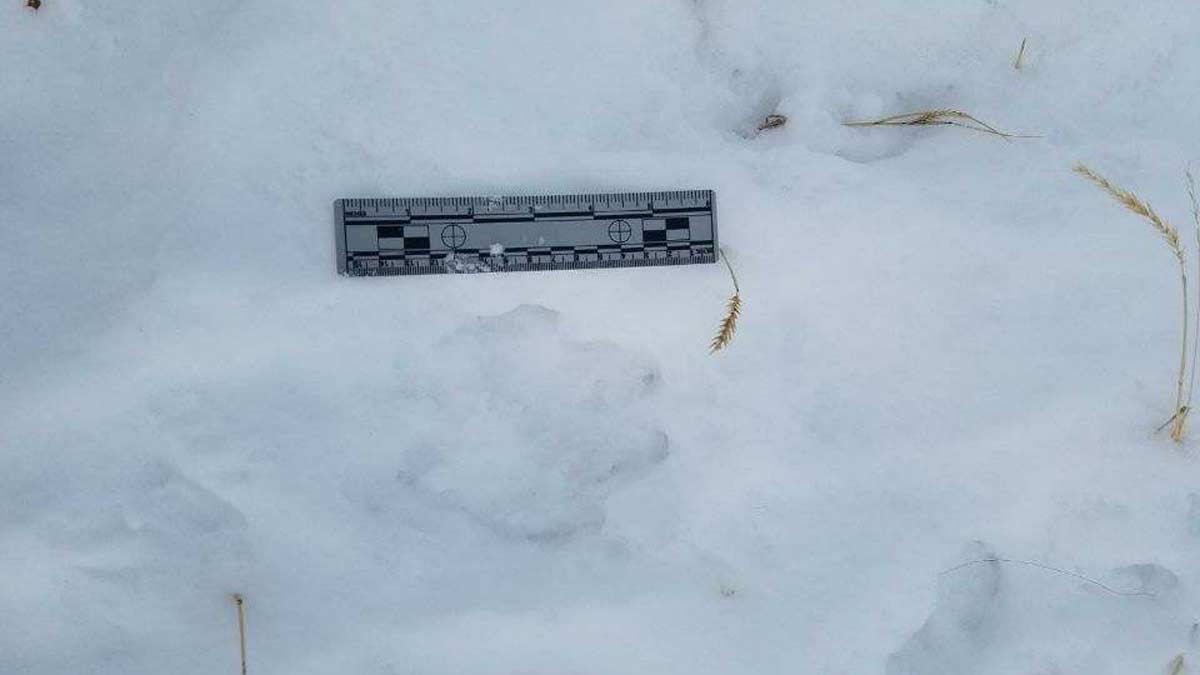Colorado Parks and Wildlife (CPW) confirms an active wolf pack is now living in the northwest corner of the state. The verification flies in the face of extreme environmentalists behind a ballot initiative seeking to forcibly introduce wolves onto the Colorado landscape.
“It is inevitable, based on known wolf behavior, that they would travel here from states where their populations are well-established,” said JT Romatzke, CPW northwest regional manager. “We have no doubt that they are here, and the most recent sighting of what appears to be wolves traveling together in what can be best described as a pack is further evidence of the presence of wolves in Colorado.”
 In late December 2019, hunters came across a bull elk carcass (see photo) in Irish Canyon, located in Game Management Units 201-202, “ripped to pieces.”
In late December 2019, hunters came across a bull elk carcass (see photo) in Irish Canyon, located in Game Management Units 201-202, “ripped to pieces.”
“At the site, CPW officers observed several large canid tracks (see photo) from multiple animals surrounding the carcass,” Mike Porras, CPW public information officer, told the Craig Daily Press. “The tracks are consistent with those made by wolves. In addition, the condition of the carcass is consistent with known wolf predation.”

Porras believes there are least six wolves in the pack.
In October 2019, an eyewitness reported seeing six wolves in the same general area near the Utah and Wyoming borders and even captured two of them on video (see above).
“The sighting marks the first time in recent history CPW has received a report of multiple wolves traveling together,” said Romatzke. “”In addition, in the days prior, the eyewitness says he heard distinct howls coming from different animals. In my opinion, this is a very credible report.”
Additionally, in July 2019, the Wyoming Game and Fish Department confirmed a collared animal spotted in northern Colorado as a wolf.
“The latest sightings add to other credible reports of wolf activity in Colorado over the past several years,” said Romatzke. “In addition to tracks, howls, photos and videos, the presence of one wolf was confirmed by DNA testing a few years ago, and in a recent case, we have photos and continue to track a wolf with a collar from Wyoming’s Snake River pack.”
“To be clear, the Rocky Mountain Elk Foundation strongly opposes the forced introduction of gray wolves to Colorado,” said Kyle Weaver, RMEF president and CEO.
Among other things, the ballot initiative circumvents the authority of CPW, Colorado’s wildlife management professionals, which is already on the record several times over the years as “opposing the intentional release of any wolves into Colorado.” CPW currently has a management plan in place for naturally migrating wolves.
“We will not take direct action and we want to remind the public that wolves are federally endangered species and fall under the jurisdiction of the U.S. Fish and Wildlife Service. As wolves move into the state on their own, we will work with our federal partners to manage the species,” Romatzke added.
RMEF maintains that state agencies should manage wolves just as they manage elk, bears, deer, mountain lions and other wildlife.
Ballot initiative proponents submitted 215,000 signatures to the Colorado Secretary of State’s office, which later verified enough signatures to place the issue on the 2020 ballot even though it declared an estimated 76,000 (or 35.3 percent) of them as invalid.
If the initiative passes, a legislative report indicates a forced wolf introduction would cost Colorado taxpayers a cumulative amount of approximately $6 million eight years into the effort.
(Video/photo source: Colorado Parks and Wildlife)